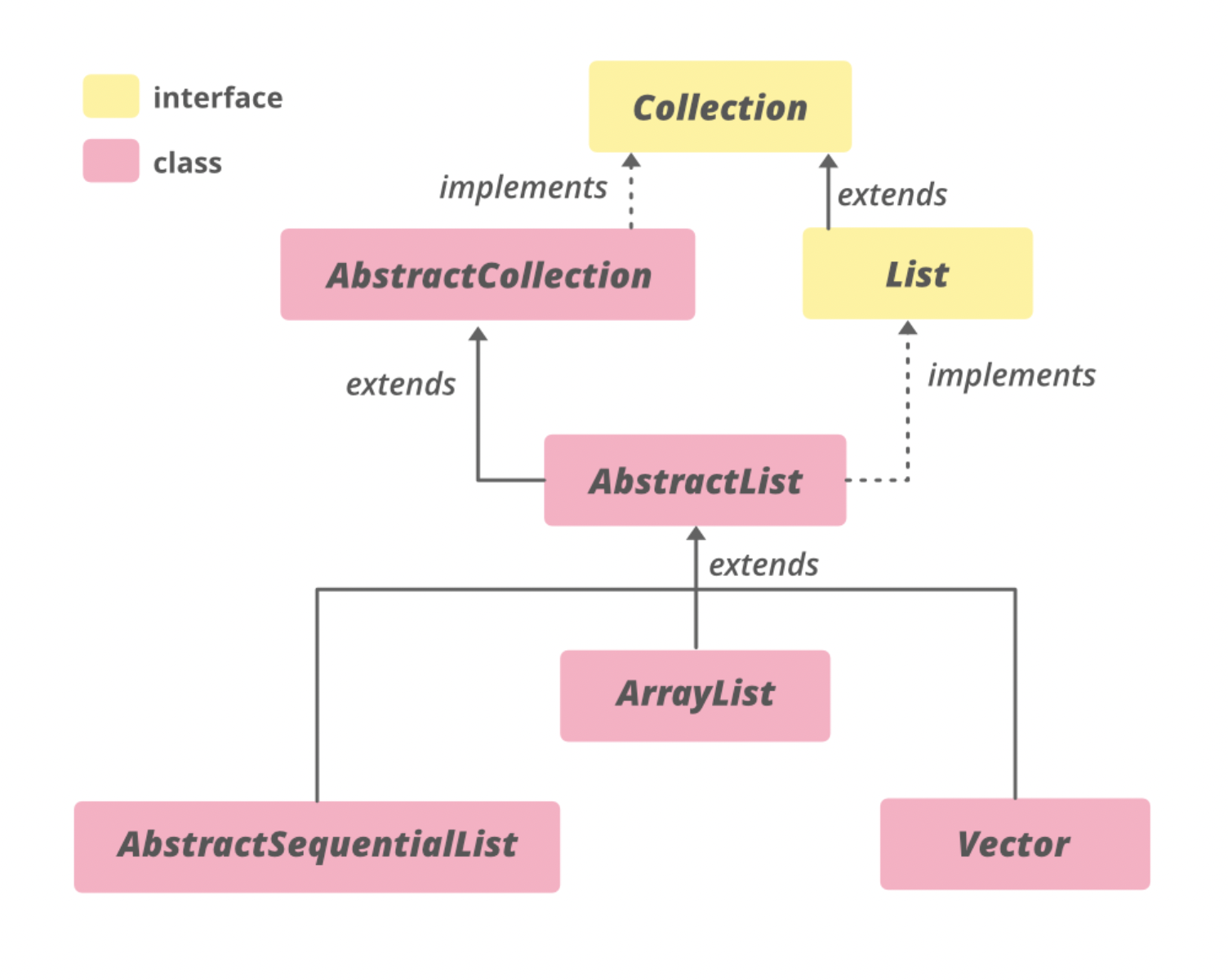List and ArrayLists
- List is an interface, and the instances of List can be created by implementing various classes.
- ArrayList class is used to create a dynamic array that contains objects.
// Importing all utility classes
import java.util.*;
// Main class
public class places {
// Main driver method
public static void main()
{
// Creating an object of List class
// Declaring an object of String type with
// reference to ArrayList class
// Type safe list
ArrayList<String> place = new ArrayList<String>(); //place - object, <String> - type
// Adding elements using add() method
// Custom input elements
place.add("New York");
place.add("Hawii");
place.add("Los Angeles");
place.add("Korea");
// Print and display the elements in
// ArrayList class object
System.out.println("a list of places to travel: " + place);
//remove element of index 1
place.remove(1);
System.out.println("a lists of places to travel after traveled to Hawii: " + place);
//print index 1 of the arraylist with Hawii removed
System.out.println("where do you want to travel to next? " + place.get(1)); //new index 1 is Los Angeles
//print the size of the arraylist
System.out.println("numbers of places that you are going to travel to: " + place.size());
//change index 1 to Japan
place.set(1, "Japan");
System.out.println("changing Los Angeles to Japan: " + place);
}
}
places.main();
- ArrayList is basically a part of the collection framework and is present in java.util package.
// Importing all utility classes
import java.util.*;
- ArrayList can not be used for primitive types, like int, char, etc. We need a wrapper class for such cases.
- Interger for int, Long for long, Boolean for boolean, etc.
- Wrapper classes provide a way to use primitive data types (int, boolean, etc..) as objects.
| Array | ArrayList |
|---|---|
| It can be single-dimensional or multidimensional | It can only be single-dimensional |
| It is static and of fixed length | It is dynamic and can be increased or decreased in size when required |
| An array can hold primitives and objects both in Java | ArrayList can only hold objects, not primitives (wrapper classes) |
| Through the length keyword, we can determine the total size of an array | Through the size() method, we can determine the size of an ArrayList |
| It is faster than ArrayList due to its static behaviour | It is slower as compared to the Array due to its dynamic behaviour |
Difference between ArrayList and List
| List | ArrayList |
|---|---|
| It is an interface | It is class |
| It creates a list of objects that can be accessed by the individual index number | It creates a dynamic array that can be expanded when needed |
| It extends the collection framework. | It extends AbstractList class and implements the List interface |
| It can not be instantiated | It can be instantiate |
Interface? Class? AbstractList class?
Here is an visual showing the relationship:

Angle Bracket <> in Java
- used to define Generics
- Generic is a way to parameterize a class, method, or interface
- // To create an instance of generic class
BaseType <Type> obj = new BaseType <Type>()
- angle bracket(diamond syntax) takes a generic type in the definition and any class as a parameter during the calling
- to allow type (Integer, String, … etc and user-defined types) to be a parameter to methods, classes, and interfaces
import java.util.*;
public class places<T> {
public static void main()
{
// arraylist <String>
ArrayList<String> place = new ArrayList<String>(); //place - object, <String> - type
place.add("New York");
place.add("Hawii");
place.add("Los Angeles");
place.add("Korea");
System.out.println("a list of places to travel: " + place);
// new arraylist <Integer>
ArrayList<Integer> placeNumber = new ArrayList<Integer>();
placeNumber.add(30);
placeNumber.add(14);
placeNumber.add(3);
System.out.println("how many possible days do you want to travel for: " + placeNumber);
System.out.println("how many days you plan to stay in Korea for: " + placeNumber.get(1));
}
}
places.main();
helpful websites/videos to help with understanding
- arraylist: https://medium.com/javarevisited/how-to-work-with-arraylists-in-java-lets-deep-dive-f1911d261358
- array vs arraylist: https://www.youtube.com/watch?v=NbYgm0r7u6o
- angle bracket in java: https://www.geeksforgeeks.org/angle-bracket-in-java-with-examples/
- generics in java: https://www.geeksforgeeks.org/generics-in-java/
- interating over arraylist in java